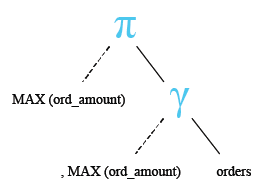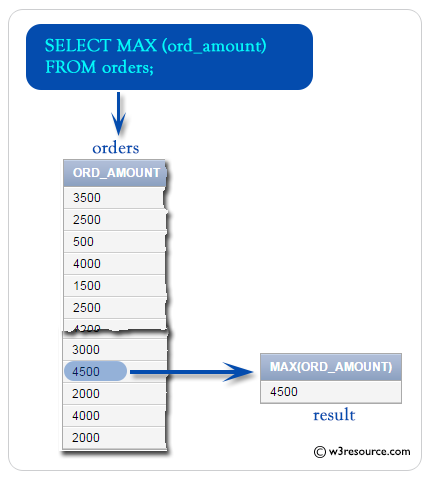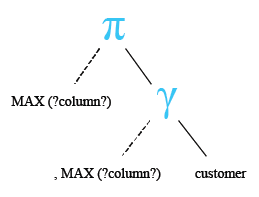SQL MAX() function
MAX() function
The aggregate function SQL MAX() is used to find the maximum value or highest value of a certain column or expression. This function is useful to determine the largest of all selected values of a column.
Syntax:
MAX ([ALL | DISTINCT] expression )
DB2 and Oracle Syntax:
MAX ([ALL | DISTINCT] expression ) OVER (window_clause)
Parameters:
| Name | Description |
|---|---|
| ALL | Applies to all values. |
| DISTINCT | Consider each unique value. DISTINCT is not meaningful with MAX function. |
| expression | Expression made up of a single constant, variable, scalar function, or column name or any combination of arithmetic, bitwise, and string operators. MAX can be used with numeric, character, and datetime columns, but not with bit columns. Aggregate functions and subqueries are not permitted. |
DBMS Support: COUNT() function
| DBMS | Command |
| MySQL | Supported |
| PostgreSQL | Supported |
| SQL Server | Supported |
| Oracle | Supported |
Syntax diagram - MAX() function

Example:
To get maximum 'ord_amout' from the 'orders' table, the following SQL statement can be used :
Sample table: orders
SELECT MAX (ord_amount)
FROM orders;
Relational Algebra Expression:

Relational Algebra Tree:

Output:
MAX(ORD_AMOUNT)
---------------
4500
Pictorial Presentation:

SQL MAX() with addition of two columns
To get the maximum value of (opening_amt+receive_amt) from the customer table, the following SQL statement can be used :
Sample table: customer
SELECT MAX (opening_amt+receive_amt)
FROM customer;
Relational Algebra Expression:

Relational Algebra Tree:

Output:
MAX(OPENING_AMT+RECEIVE_AMT)
----------------------------
19000
Note: Outputs of the said SQL statement shown here is taken by using Oracle Database 10g Express Edition
Here is a slide presentation of all aggregate functions.
Check out our 1000+ SQL Exercises with solution and explanation to improve your skills.
Previous: Avg with round, group by
Next: Max with Group by, Order by
